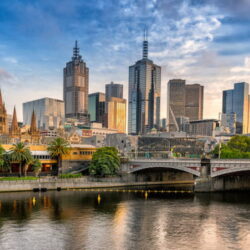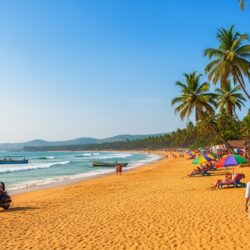This guide explores the best time to visit Gir National Park, breaking down seasonal advantages, weather conditions, safari tips, and month-wise recommendations to help you plan the perfect wildlife adventure.
Gir National Park, located in Gujarat’s Junagadh district, is the only place in the world where the majestic Asiatic lion roams freely in its natural habitat. Spanning over 1,400 square kilometers, this dry deciduous forest is a haven for wildlife enthusiasts, photographers, and eco-travelers. But timing your visit is crucial—each season offers a distinct experience, from misty winter safaris to intense summer sightings.
The best time to visit Gir National Park is from November to March, when the weather is cool and pleasant, wildlife sightings are frequent, and safari conditions are ideal. Summer months (April to June) offer excellent lion-spotting opportunities, while the park remains closed during the monsoon season (July to mid-October).
🧭 Seasonal Overview
🌿 Winter (November to February): Peak Season
Why it’s ideal:
- Temperatures range from 10°C to 25°C
- Comfortable weather for safaris and nature walks
- High chances of spotting lions, leopards, and birds
Highlights:
- Clear skies and crisp mornings
- Migratory birds like flamingos, pelicans, and eagles
- Popular months: December and January
Safari Tips:
- Book safaris 30–45 days in advance
- Opt for early morning slots for active wildlife
- Carry light woolens and binoculars
Festivals Nearby:
- Uttarayan (kite festival in January)
- Gir Birding Festival (select dates)
☀️ Summer (March to June): Best for Lion Sightings
Why it’s rewarding:
- Sparse vegetation improves visibility
- Lions and other animals gather near waterholes
- Fewer tourists mean quieter safaris
Challenges:
- Temperatures soar to 40°C in May and June
- Afternoon safaris can be exhausting
Safari Tips:
- Choose early morning or late evening slots
- Stay hydrated and wear breathable clothing
- Use sun protection and carry water bottles
Wildlife Behavior:
- Lions are more active during cooler hours
- Crocodiles bask near Kamleshwar Dam
- Birdwatching remains fruitful in shaded zones
🌧️ Monsoon (July to Mid-October): Park Closed
Why it’s off-limits:
- Gir National Park remains closed for breeding season
- Heavy rains make forest trails inaccessible
- Wildlife activity is minimal and unpredictable
Alternatives:
- Visit Devalia Safari Park (Interpretation Zone) which may remain open
- Explore nearby attractions like Somnath Temple or Junagadh Fort
Travel Tip:
- Use this time to plan your winter or summer trip
- Watch for announcements on park reopening dates
📅 Month-by-Month Breakdown
| Month | Weather | Wildlife Experience |
| November | Cool & dry | Start of peak season, active wildlife |
| December | Crisp mornings | Ideal for safaris and birdwatching |
| January | Cold nights | High lion visibility, festive ambiance |
| February | Pleasant & sunny | Great for photography and nature walks |
| March | Warming up | Good lion sightings, fewer crowds |
| April | Hot afternoons | Best visibility, lions near waterholes |
| May | Peak summer | Excellent lion tracking, dry terrain |
| June | Pre-monsoon heat | Limited comfort, but rewarding safaris |
| July–Oct | Rainy & humid | Park closed, breeding season |
🐾 Wildlife Sightings by Season
Winter
- Asiatic lions resting in open grasslands
- Leopards near rocky outcrops
- Migratory birds at Kamleshwar Dam
- Hyenas and jackals on morning patrol
Summer
- Lions near water sources
- Crocodiles sunbathing
- Peacocks displaying plumage
- Nilgai and chinkara grazing in open zones
Monsoon
- Limited sightings due to dense foliage
- Breeding activity among herbivores
- Bird nesting and insect diversity (outside park)
🧳 What to Pack Based on Season
Winter:
- Light woolens, shawls, and socks
- Camera with zoom lens and binoculars
- Sunscreen and lip balm for dry air
Summer:
- Cotton clothes, hats, and sunglasses
- Reusable water bottle and electrolyte sachets
- Insect repellent and sunscreen
Monsoon (if visiting Devalia):
- Umbrella, raincoat, and waterproof shoes
- Quick-dry clothing and camera protection
🏨 Where to Stay
Gir offers a range of accommodations tailored to seasonal travel:
- Forest Lodges: Ideal for winter and summer safaris; basic but close to safari gates
- Eco-Resorts: Great for birdwatchers and wellness travelers; offer nature trails and organic meals
- Luxury Camps: Best during winter; include spa, curated safaris, and cultural evenings
- Budget Hotels: Suitable year-round; located near Sasan Gir and Devalia Park
🚙 Safari Booking Tips
- Book online via official Gujarat Forest Department portal
- Choose safari zones based on wildlife density (Sasan Gir, Kamleshwar, etc.)
- Carry ID proof and booking confirmation
- Arrive 30 minutes before safari time
- Follow guide instructions and maintain silence
🌿 Responsible Travel Practices
- Avoid littering and loud noises
- Do not feed or provoke animals
- Respect local communities and tribal zones
- Support eco-lodges and conservation initiatives
- Travel in small groups for minimal impact
🌟 Final Thoughts
The best time to visit Gir National Park depends on your travel goals. For comfort and variety, November to March is ideal. If lion sightings are your priority, April to June offers unmatched visibility. Avoid the monsoon season unless you’re exploring nearby cultural sites or Devalia Park.
The best time to visit Gir National Park is from November to March, when the weather is cool and pleasant, wildlife sightings are frequent, and safari conditions are ideal. Summer months (April to June) offer excellent lion-spotting opportunities, while the park remains closed during the monsoon season (July to mid-October).
By aligning your visit with seasonal rhythms, you’ll not only enhance your safari experience but also contribute to the park’s sustainable tourism model.




